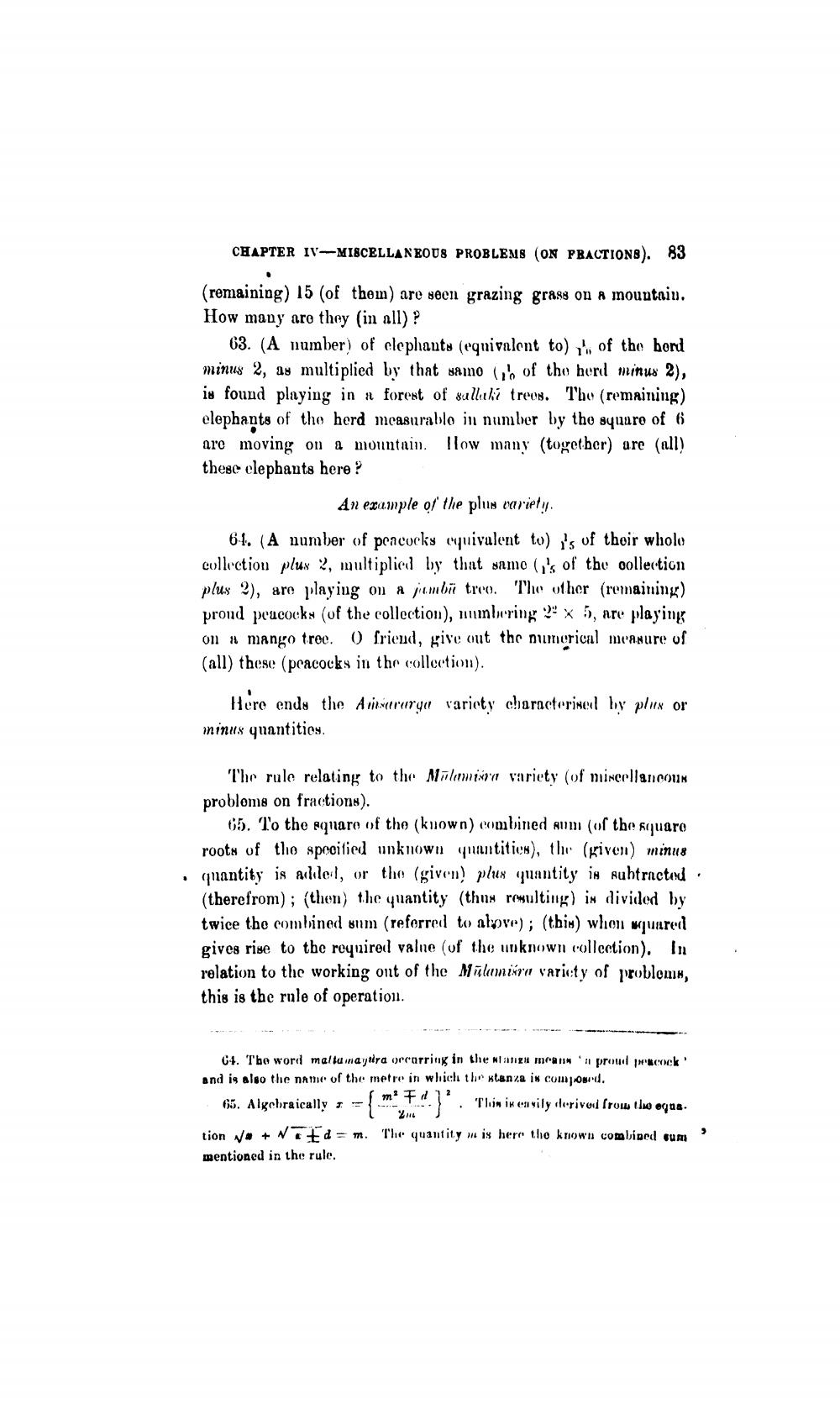________________
"
CHAPTER IV-MISCELLANEOUS PROBLEMS (ON FRACTIONS). 83 (remaining) 15 (of them) are seen grazing grass on a mountain. How many are they (in all)?
63. (A number) of elephants (equivalent to), of the herd minus 2, as multiplied by that same (% of the herd minus 2), is found playing in a forest of sallaki trees. The (remaining) elephants of the herd measurable in number by the square of 6 are moving on a mountain. How many (together) are (all) these elephants here?
An example of the plus variety.
64. (A number of peacocks equivalent to) is of their whole collection plus 2, multiplied by that same (s of the collection plus 2), are playing on a jamb treo. The other (remaining) proud peacocks (of the collection), numbering 2x 5, are playing on a mango tree. O friend, give out the numerical measure of (all) these (peacocks in the collection).
Here ends the Asararga variety characterised by plus or minus quantities.
The rule relating to the Malamisra variety (of miscellaneous problems on fractions).
65. To the square of the (known) combined sum (of the square roots of the specified unknown quantities), the (given) minus
quantity is added, or the (given) plus quantity is subtracted. (therefrom); (then) the quantity (thus resulting) is divided by twice the combined sum (referred to above); (this) when squared gives rise to the required valne (of the unknown collection). In relation to the working ont of the Malamišra variety of problems, this is the rule of operation.
64. The word maltamaytira orcarring in the stanga means a proud peacock' and is also the name of the metre in which the stanza is composed.
m2 d
- {~2~
d}" This is easily derived from the equa.
65. Algebraically = tion +±d = m. The quantity is here the known combined sum mentioned in the rule.
>




